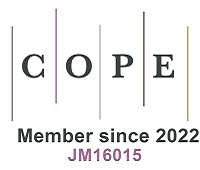REFERENCES
1. Li, P.; Guo, M. Y.; Gao, L. L.; et al. Photoresponsivity and antibiotic sensing properties of an entangled tris(pyridinium)-based metal-organic framework. Dalton. Trans. 2020, 49, 7488-95.
2. Dietl, C.; Hintz, H.; Rühle, B.; Schmedt, A. G. J.; Langhals, H.; Wuttke, S. Switch-on fluorescence of a perylene-dye-functionalized metal-organic framework through postsynthetic modification. Chemistry 2015, 21, 10714-20.
3. Ye, Y.; Gong, L.; Xiang, S.; Zhang, Z.; Chen, B. Metal-organic frameworks as a versatile platform for proton conductors. Adv. Mater. 2020, 32, e1907090.
4. Yuan, J.; Pan, Z.; Jin, Y.; et al. Membranes in non-aqueous redox flow battery: a review. J. Power. Sources. 2021, 500, 229983.
5. Shao, Z.; Xue, X.; Gao, K.; et al. Sulfonated covalent organic framework packed Nafion membrane with high proton conductivity for H2/O2 fuel cell applications. J. Mater. Chem. A. 2023, 11, 3446-53.
6. Chen, J.; Shao, Z.; Zhao, Y.; et al. Metal-ion coupling in metal-organic framework materials regulating the output performance of a triboelectric nanogenerator. Inorg. Chem. 2022, 61, 2490-8.
7. Wen, T.; Shao, Z.; Wang, H.; Zhao, Y.; Cui, Y.; Hou, H. Enhancement of proton conductivity in fe-metal-organic frameworks by postsynthetic oxidation and high-performance hybrid membranes with low acidity. Inorg. Chem. 2021, 60, 18889-98.
8. Yang, N.; Zhan, G.; Li, D.; Wang, X.; He, X.; Liu, H. Complete nitrogen removal and electricity production in thauera-dominated air-cathode single chambered microbial fuel cell. Chem. Eng. J. 2019, 356, 506-15.
9. Chen, S.; Bocarsly, A.; Benziger, J. Nafion-layered sulfonated polysulfone fuel cell membranes. J. Power. Sources. 2005, 152, 27-33.
10. Sajid, A.; Pervaiz, E.; Ali, H.; Noor, T.; Baig, M. M. A perspective on development of fuel cell materials: electrodes and electrolyte. Intl. J. Energy. Res. 2022, 46, 6953-88.
11. Yang, Y.; Peltier, C. R.; Zeng, R.; et al. Electrocatalysis in alkaline media and alkaline membrane-based energy technologies. Chem. Rev. 2022, 122, 6117-321.
12. Neergat, M.; Shukla, A. A high-performance phosphoric acid fuel cell. J. Power. Sources. 2001, 102, 317-21.
13. Hu, L.; Lindbergh, G.; Lagergren, C. Performance and durability of the molten carbonate electrolysis cell and the reversible molten carbonate fuel cell. J. Phys. Chem. C. 2016, 120, 13427-33.
14. Ma, R.; Gao, F.; Breaz, E.; Huangfu, Y.; Briois, P. Multidimensional reversible solid oxide fuel cell modeling for embedded applications. IEEE. Trans. Energy. Convers. 2018, 33, 692-701.
15. Zhang, X.; Zhang, T.; Chen, H.; Cao, Y. A review of online electrochemical diagnostic methods of on-board proton exchange membrane fuel cells. Appl. Energy. 2021, 286, 116481.
16. Tellez-Cruz, M. M.; Escorihuela, J.; Solorza-Feria, O.; Compañ, V. Proton exchange membrane fuel cells (PEMFCs): advances and challenges. Polymers 2021, 13, 3064.
17. Wang, H.; Wen, T.; Shao, Z.; et al. High proton conductivity in nafion/Ni-MOF composite membranes promoted by ligand exchange under ambient conditions. Inorg. Chem. 2021, 60, 10492-501.
18. Shao, Y.; Yin, G.; Wang, Z.; Gao, Y. Proton exchange membrane fuel cell from low temperature to high temperature: material challenges. J. Power. Sources. 2007, 167, 235-42.
19. Ranjeesh, K. C.; Illathvalappil, R.; Veer, S. D.; et al. Imidazole-linked crystalline two-dimensional polymer with ultrahigh proton-conductivity. J. Am. Chem. Soc. 2019, 141, 14950-4.
20. Celis-Salazar, P. J.; Epley, C. C.; Ahrenholtz, S. R.; Maza, W. A.; Usov, P. M.; Morris, A. J. Proton-coupled electron transport in anthraquinone-based zirconium metal-organic frameworks. Inorg. Chem. 2017, 56, 13741-7.
21. Laberty-Robert, C.; Vallé, K.; Pereira, F.; Sanchez, C. Design and properties of functional hybrid organic-inorganic membranes for fuel cells. Chem. Soc. Rev. 2011, 40, 961-1005.
22. Shao, Z.; Huang, C.; Dang, J.; et al. Modulation of magnetic behavior and Hg2+ removal by solvent-assisted linker exchange based on a water-stable 3D MOF. Chem. Mater. 2018, 30, 7979-87.
23. Paddison, S. Proton conduction mechanisms at low degrees of hydration in sulfonic acid-based polymer electrolyte membranes. Annu. Rev. Mater. Res. 2003, 33, 289-319.
25. Xu, J.; Zhang, Z.; Yang, K.; Zhang, H.; Wang, Z. Synthesis and properties of novel cross-linked composite sulfonated poly (aryl ether ketone sulfone) containing multiple sulfonic side chains for high-performance proton exchange membranes. Renew. Energy. 2019, 138, 1104-13.
26. Zhong, S.; Cui, X.; Cai, H.; Fu, T.; Zhao, C.; Na, H. Crosslinked sulfonated poly(ether ether ketone) proton exchange membranes for direct methanol fuel cell applications. J. Power. Sources. 2007, 164, 65-72.
27. Yuan, Q.; Liu, P.; Baker, G. L. Sulfonated polyimide and PVDF based blend proton exchange membranes for fuel cell applications. J. Mater. Chem. A. 2015, 3, 3847-53.
28. Muthumeenal, A.; Neelakandan, S.; Rana, D.; Matsuura, T.; Kanagaraj, P.; Nagendran, A. Sulfonated polyethersulfone (SPES) - charged surface modifying macromolecules (cSMMs) blends as a cation selective membrane for fuel cells. Fuel. Cells. 2014, 14, 853-61.
29. Li, L.; Zhang, J.; Wang, Y. Sulfonated poly(ether ether ketone) membranes for direct methanol fuel cell. J. Membr. Sci. 2003, 226, 159-67.
30. Wong, C. Y.; Wong, W. Y.; Loh, K. S.; et al. Development of poly(vinyl alcohol)-based polymers as proton exchange membranes and challenges in fuel cell application: a review. Polym. Rev. 2020, 60, 171-202.
31. Bhowmick, G. D.; Dhar, D.; Ghangrekar, M. M.; Banerjee, R. TiO2-Si- or SrTiO3-Si-impregnated PVA-based low-cost proton exchange membranes for application in microbial fuel cell. Ionics 2020, 26, 6195-205.
32. Guo, Z.; Xu, X.; Xiang, Y.; Lu, S.; Jiang, S. P. New anhydrous proton exchange membranes for high-temperature fuel cells based on PVDF-PVP blended polymers. J. Mater. Chem. A. 2015, 3, 148-55.
33. Liang, X.; Zhang, F.; Feng, W.; et al. From metal-organic framework (MOF) to MOF-polymer composite membrane: enhancement of low-humidity proton conductivity. Chem. Sci. 2013, 4, 983-92.
34. Basura, V.; Beattie, P.; Holdcroft, S. Solid-state electrochemical oxygen reduction at Pt|Nafion® 117 and Pt|BAM3GTM 407 interfaces. J. Electroanal. Chem. 1998, 458, 1-5.
35. Hu, F.; Zhong, F.; Wen, S.; et al. Preparation and properties of chitosan/organic-modified attapulgite composite proton exchange membranes for fuel cell applications. Polym. Compos. 2020, 41, 2254-62.
36. Hu, F.; Li, T.; Zhong, F.; et al. Preparation and properties of chitosan/acidified attapulgite composite proton exchange membranes for fuel cell applications. J. Appl. Polym. Sci. 2020, 137, 49079.
37. Kirchon, A.; Feng, L.; Drake, H. F.; Joseph, E. A.; Zhou, H. C. From fundamentals to applications: a toolbox for robust and multifunctional MOF materials. Chem. Soc. Rev. 2018, 47, 8611-38.
38. Zhu, X.; Yang, C.; Yan, X. Metal-organic framework-801 for efficient removal of fluoride from water. Microporous. Mesoporous. Mater. 2018, 259, 163-70.
39. Wang, R.; Xu, H.; Zhang, K.; Wei, S.; Deyong, W. High-quality Al@Fe-MOF prepared using Fe-MOF as a micro-reactor to improve adsorption performance for selenite. J. Hazard. Mater. 2019, 364, 272-80.
40. Yassine, O.; Shekhah, O.; Assen, A. H.; Belmabkhout, Y.; Salama, K. N.; Eddaoudi, M. H2S sensors: fumarate‐based fcu‐mof thin film grown on a capacitive interdigitated electrode. Angew. Chem. 2016, 128, 16111-5.
41. Cao, Y.; Guo, X.; Wang, H. High sensitive luminescence metal-organic framework sensor for hydrogen sulfide in aqueous solution: A trial of novel turn-on mechanism. Sensors. Actuators. B:. Chem. 2017, 243, 8-13.
42. Wang, C.; An, B.; Lin, W. Metal-organic frameworks in solid-gas phase catalysis. ACS. Catal. 2019, 9, 130-46.
43. Lee, J.; Farha, O. K.; Roberts, J.; Scheidt, K. A.; Nguyen, S. T.; Hupp, J. T. Metal-organic framework materials as catalysts. Chem. Soc. Rev. 2009, 38, 1450-9.
44. Sadakiyo, M.; Yamada, T.; Kitagawa, H. Hydrated proton-conductive metal-organic frameworks. Chempluschem 2016, 81, 691-701.
45. Li, X.; Wang, Y.; Wu, B.; Zeng, L. Efficient proton transport in stable functionalized channels of zirconium metal-organic frameworks. ACS. Appl. Energy. Mater. 2021, 4, 8303-10.
46. Xing, X. S.; Zhou, Z.; Gao, Q.; et al. Photomodulation of proton conductivity by nitro-nitroso transformation in a metal-organic framework. Inorg. Chem. 2023, 62, 18809-13.
47. Guo, Y. Y.; Wang, R. D.; Wei, W. M.; et al. Comparative analysis of proton conductivity in two Zn-based MOFs featuring sulfate and sulfonate functional groups. Inorg. Chem. 2024, 63, 3870-81.
48. Ma, Y.; Liu, J.; Yan, W.; et al. Improving the proton conductivity of MOF materials by regulating the pore space. Microporous. Mesoporous. Mater. 2024, 367, 112974.
49. Yang, F.; Shi, R.; Huang, H.; et al. Nanochannel engineering in metal-organic frameworks by grafting sulfonic groups for boosting proton conductivity. ACS. Appl. Energy. Mater. 2022, 5, 3235-41.
50. Luo, G.; Jiang, J.; Wei, S.; et al. Introducing sulfonic acid polymers into MOF nanochannels for ultra-high Ba2+ adsorption capacity and proton conductivity. Sep. Purif. Technol. 2024, 343, 127133.
51. Gao, H.; Yu, L.; Zhang, J.; Gao, J.; Zhang, X. High proton conduction for CPM-200 achieved by aliovalent-predefinition of M3(μ3-O) building blocks and in situ encapsulation of hydrated metal ions. ACS. Materials. Lett. 2024, 6, 765-71.
52. Song, Y. J.; Sang, Y. L.; Xu, K. Y.; Hu, H. L.; Zhu, Q. Q.; Li, G. Ligand-functionalized MIL-68-type indium(III) metal-organic frameworks with prominent intrinsic proton conductivity. Inorg. Chem. 2024, 63, 4233-48.
53. Wang, K.; Si, L.; Tian, Y.; Yang, F.; et al. Ionization of a neutral MOF to disperse and anchor acid for boosting anhydrous proton conductivity. Microporous. Mesoporous. Mater. 2024, 363, 112825.
54. Liu, Y.; Liu, Y.; Zheng, X.; et al. Improving the proton conductivity of HKUST-1 by hole expansion and ionic liquid introduction. Appl. Organomet. Chem. 2024, 38, e7383.
55. Qiao, J. Q.; Ren, H. M.; Chen, X.; Li, Z. F.; Li, G. Icing on the cake: imidazole-anchored strategy to enhance the proton conductivity of two isostructural Ce(IV)/Hf(IV) metal-organic frameworks. Inorg. Chem. 2023, 62, 21309-21.
56. Wang, Q.; Jiang, F.; Zhang, R.; et al. Enhancing proton conduction of MOF-74(Co) by encapsulating NH3 molecules. J. Solid. State. Chem. 2024, 335, 124696.
57. Zhang, X.; Long, J.; Wang, M.; Liu, Y.; Ma, H. Using bifunctionalized NH2-UiO-66-SO3H to improve the performance of sulfonated poly (ether ether ketone) in proton exchange membranes. Int. J. Hydrogen. Energy. 2024, 61, 1495-504.
58. Long, J.; Zhang, X.; Zeng, S.; et al. Constructing a long-range proton conduction bridge in sulfonated polyetheretherketone membranes with low DS by incorporating acid-base bi-functionalized metal organic frameworks. Int. J. Hydrogen. Energy. 2023, 48, 2001-12.
59. Chen, X.; Ren, Q.; Xu, J.; Ju, M.; Meng, L.; Wang, Z. Design, transport efficiency and structure-activity relationship of sulfonated poly (aryl ether ketone) proton exchange membrane based on multi-functional MOFs. Electrochim. Acta. 2023, 469, 143210.
60. Ryu, G. Y.; An, S. J.; Yu, S.; et al. Dual-sulfonated MOF/polysulfone composite membranes boosting performance for proton exchange membrane fuel cells. Eur. Polym. J. 2022, 180, 111601.
61. Xing, Y. Y.; Wang, J.; Zhang, C. X.; Wang, Q. L. High proton conductivity of the UiO-66-NH2-SPES composite membrane prepared by covalent cross-linking. ACS. Appl. Mater. Interfaces. 2023, 15, 33003-12.
62. Ding, L.; Zou, H.; Lu, J.; et al. Enhancing proton conductivity of nafion membrane by incorporating porous tb-metal-organic framework modified with nitro groups. Inorg. Chem. 2022, 61, 16185-96.
63. Chen, X.; Zhang, S. L.; Xiao, S. H.; Li, Z. F.; Li, G. Ultrahigh proton conductivities of postmodified Hf(IV) metal-organic frameworks and related chitosan-based composite membranes. ACS. Appl. Mater. Interfaces. 2023, 15, 35128-39.
64. Liu, J.; Yan, W.; Ma, Y.; et al. Improving proton-conducting stability by regulating pore size of MOF materials through mixed grinding. ACS. Appl. Mater. Interfaces. 2024, 16, 34240-53.
65. Sun, J.; Han, D.; Dong, R.; et al. Enhancing proton conductivity and dimensional stability of nanofiber proton exchange membranes through in situ growth of MOF-Modified PVDF nanofibers. Energy. Fuels. 2024, 38, 7322-30.
66. Bao, Y.; Zheng, J.; Zheng, H.; et al. Cu-MOF@PVP/PVDF hybrid composites as tunable proton-conducting materials. J. Solid. State. Chem. 2022, 310, 123070.
67. Yang, J.; Lin, J.; Sun, S.; Li, X.; Liu, L.; Wang, C. Multidimensional network of polypyrrole nanotubes loaded with ZIF-67 to construct multiple proton transport channels in composite proton exchange membranes for fuel cells. J. Mater. Sci. Technol. 2023, 152, 75-85.









